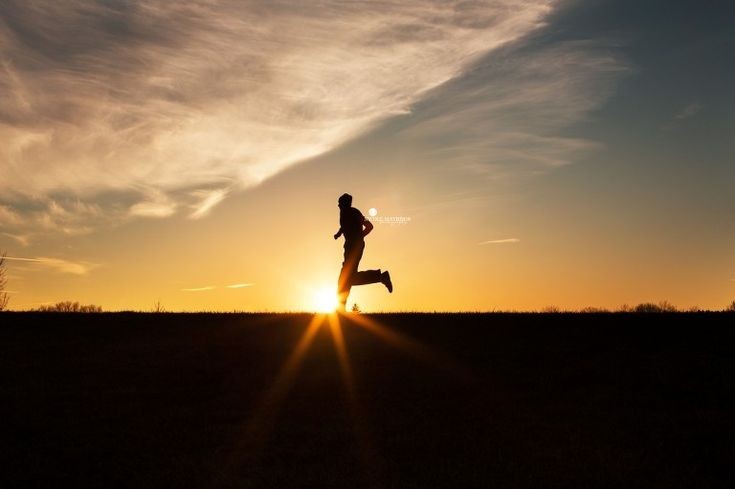On the definitive list of amazing exercise activities, running ranks pretty highly — the practical benefits include convenience and affordability, but from a health standpoint, it’s an effective way to keep both your body and brain in great shape. Whether it’s your favorite part of the day or something you have to push yourself through, the benefits are undeniable.
What are the benefits of running?
Running is incredibly beneficial to the body, mind, and spirit. You will find that even short runs can leave you feeling more energized, more focused, and better able to enjoy all that life has to offer.
-
Running improves your health
Believe it or not, running is actually a great way to increase your overall level of health. Research shows that running can raise your levels of good cholesterol while also helping you increase lung function and use. In addition, running can also boost your immune system and lower your risk of developing blood clots.
-
Prevents disease
For women, running can help to lower the risk of breast cancer. It can also help reduce the risk of having a stroke. Many doctors today recommend running for people who are in the early stages of diabetes, high blood pressure, and osteoporosis, and it is proven to help reduce the risk of having a heart attack.
-
You might lose weight
Running is one of the best forms of exercise for losing or maintaining a consistent weight. You will find that it is a leading way to burn off extra calories and that it is the second most effective exercise in terms of calories burned per minute, following only cross-country skiing.
-
Boosts your confidence
Not all of the benefits of running are physical. Running can provide a noticeable boost to your confidence and self-esteem. By setting and achieving goals, you can help give yourself a greater sense of empowerment that will leave you feeling much happier.
-
Relieves stress
Stress can actually cause a number of health and mood problems. It can also diminish appetite and sleep quality. When you run, you force your body to exert excess energy and hormones. Running also helps to reduce your chances of developing tension headaches.
-
Has the power to eliminate depression
When you are depressed, the last thing you likely want to do is to get up and go for a run. Yet you will find that after only a few minutes of running, your brain will start to secrete hormones that naturally improve your mood. In fact, few things in the world can better or more rapidly treat depression than exercise such as running.
-
Is convenient
Unlike hitting the gym or playing a round of tennis, running is something you can do anytime, anywhere. “you can literally go right outside your door and start,” says Amanda Shannon Verrengia, ace-certified personal trainer and USA track, and field and RRCA coach.
Just lace up your running shoes and you’re ready to pound the pavement — or the treadmill, the track, the park, or the trail behind your house. As Verrengia notes, you can bring your dog with you, or head out with a friend or significant other.
-
Is cheap
Running can actually help you save cash. It’s free to do and requires minimal gear. All you need is a good pair of running shoes [and some workout clothes].
-
You’ll improve your cardiovascular health.
The body is amazingly adaptable, and when faced with repeated bouts of challenging aerobic (oxygen requiring) exercise, it upgrades the functioning of its entire cardiorespiratory system to better handle that exercise.
-
Is easy to learn.
That doesn’t mean running is easy — it just means you don’t have to possess any special skills to do it.
-
You’ll get a natural high.
Runner’s high — the feeling of euphoria you get during or following a run — is real.
“Running boosts the brain’s serotonin levels, dopamine levels, and endorphins,” says Meghan Lennihan, NASM-CPT, a road runners club of America and USA triathlon run coach. That quick injection of joy and energy is awesome in and of itself, but the added benefit is that helps keep you motivated to tackle your next workout.
-
Can improve your athleticism.
Running is an essential component of many sports, from football to cricket. It’s no surprise, then, that regular running workouts, which help improve your stamina, speed, and cardiovascular endurance, can make you a stronger, more adaptable athlete.
The 3 basic types of running
Of course, not all running is the same. There are three basic levels, each of which can provide unique benefits.
-
Jogging
Kennihan defines jogging as running at a gentle pace slower than 6 mph (10 kph).
“Typically, those [who] don’t enjoy running, or who aren’t going to be competing in any races, can get away with only jogging one to two times a week and still get health benefits,” she says. For people with minimal running experience, jogging can be a great way to get started.
-
Running
When you increase your pace above 6 mph, you cross the threshold from jogging into what is technically running. And when you keep up that pace for more than five miles, you’re distance running.
-
Sprinting
Jogging and distance running target your slow-twitch (type i) muscle fibers, which are engineered for endurance. Alternately, sprinting targets the same fibers as weightlifting — your more powerful fast-twitch (type ii) fibers — and when performed repeatedly in the context of a workout, is a form of high-intensity interval training (HIIT).
Where to run:
You can run just about anywhere. Find a track or a trail in the woods or a route on the street near where you live. Running in another city when you’re traveling is a great way to see new sites and check out your environment. You can also call the local running club in the location you’re traveling to for tips on scenic places to run. You might also consider joining your own local running club.
What type of clothing should be worn during running?
-
Shoes
The type of foot you have and your running style will determine the shoe that you purchase. The first thing to do is determine your foot strike. Foot strike describes how your foot hits the ground. Normally your heel lands first (heel-strike), followed by a mid-foot strike and flattening of the arch to absorb impact (very important), then the forefoot strike (front of your foot), and finally the push-off to the next stride. Soft heel strikes with a smooth gait pattern and some flattening of the arch will reduce the impact on the foot and cause less stress in joints as high up as the hip.
-
Running shorts
Shorts don’t need to be complicated. The most important features are the fabric. It should be fast-wicking polyester to keep you dry. Some shorts have pockets to stash your keys or some money, and many have a drawstring to keep them from falling off when you run.
-
Leggings
Leggings are good for when it’s chilly. They come in tights that fit snugly that are made of polyester (spandex or lycra), or they can fit looser and softer with combinations of polypropylene and other fabrics to make them feel almost like cotton. Select whichever feels most comfortable to you. All of these fabrics will keep you dry and warm.
-
Shirts
Select a tank top or t-shirt depending on what feels most comfortable. Again, the fabric should be fast-wicking polyester to keep you dry.
-
Running-specific socks
It’s a smart idea to avoid wearing 100 percent cotton socks as a runner. If you wear cotton socks, the moisture won’t get wicked away if your feet sweat or if you step in a puddle.
Instead, wear running socks that are a synthetic blend to help prevent blisters. Look for materials such as polyester, acrylic, and Coolmax.
-
Supportive sports bras
Women should make sure they’re wearing a good, supportive sports bra designed for running or other high-impact activities. Try it on and test it out by running in place and jumping up and down. Your sports bra should fit properly and not be too stretched out.
Most sports bras need to be replaced after 72 washes, when the elasticity is lost, or if your weight changes significantly.
-
Sun protection
Runners spend a lot of time outdoors in the sun, so don’t forget to protect your skin from sun exposure. Here’s how:
· Use a waterproof sunscreen that has an SPF of at least 30 and offers broad-spectrum protection, which means it protects against both UVA and UVB rays.
· Add a visor or hat that will give your face extra protection. They also help absorb sweat, so the sunscreen doesn’t run into your eyes. You’ll be especially glad you have a hat if you get caught running in the rain.
· Invest in a good pair of UV-blocking running sunglasses to protect your eyes from the sun’s damaging rays.
-
Water
When running for more than 30 minutes, it’s important to consume water to stay hydrated. The American Council on Exercise recommends hydrating every 10 to 20 minutes while working out. If you don’t have access to water on your running routes, you may have to carry your own fluids with you.
In conclusion, running is a cheap workout that is helpful for all people. If you like to do it as a habit but you can’t persist in doing it, use the Habitomic app. You can start with our app step-by-step.

